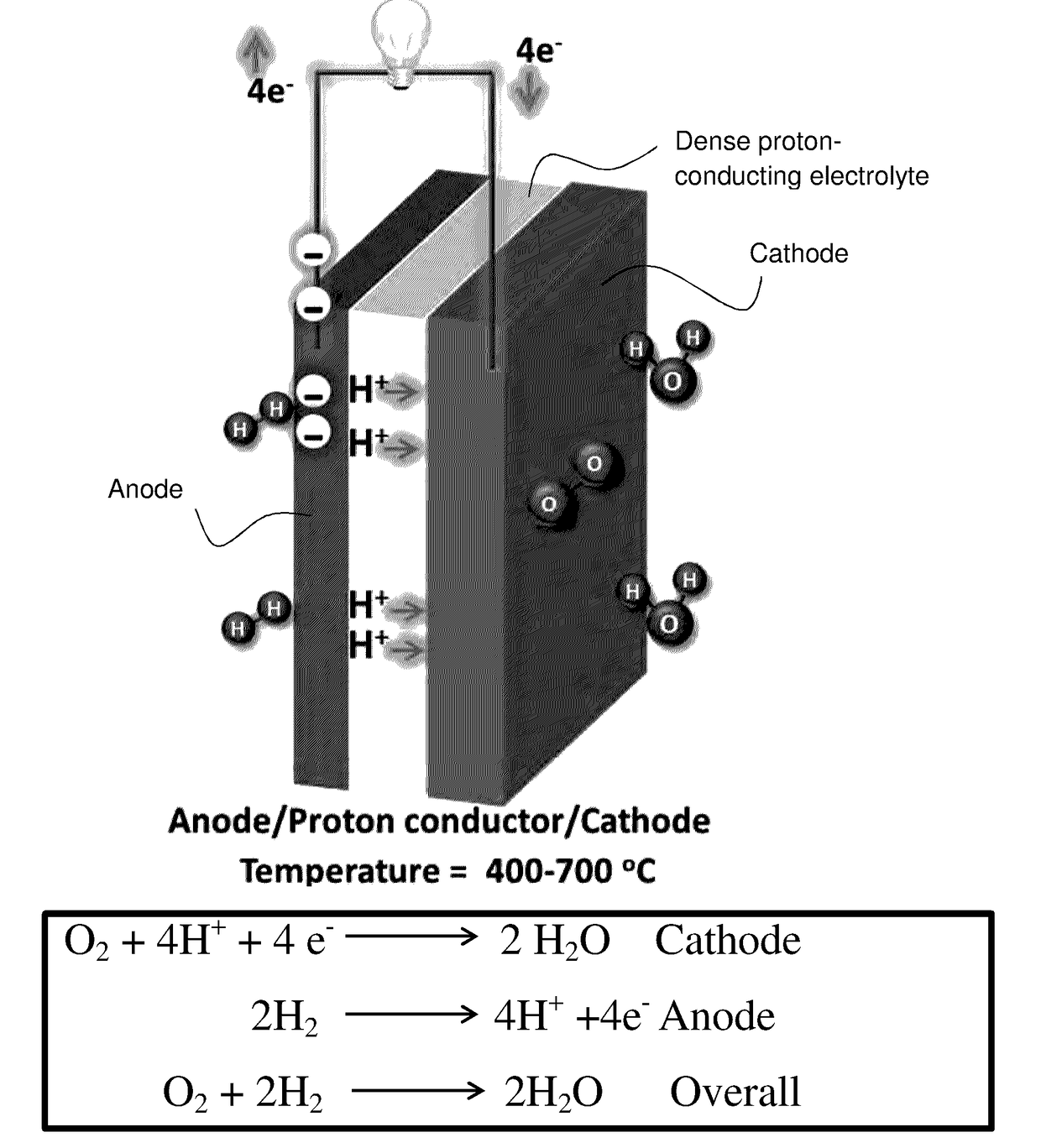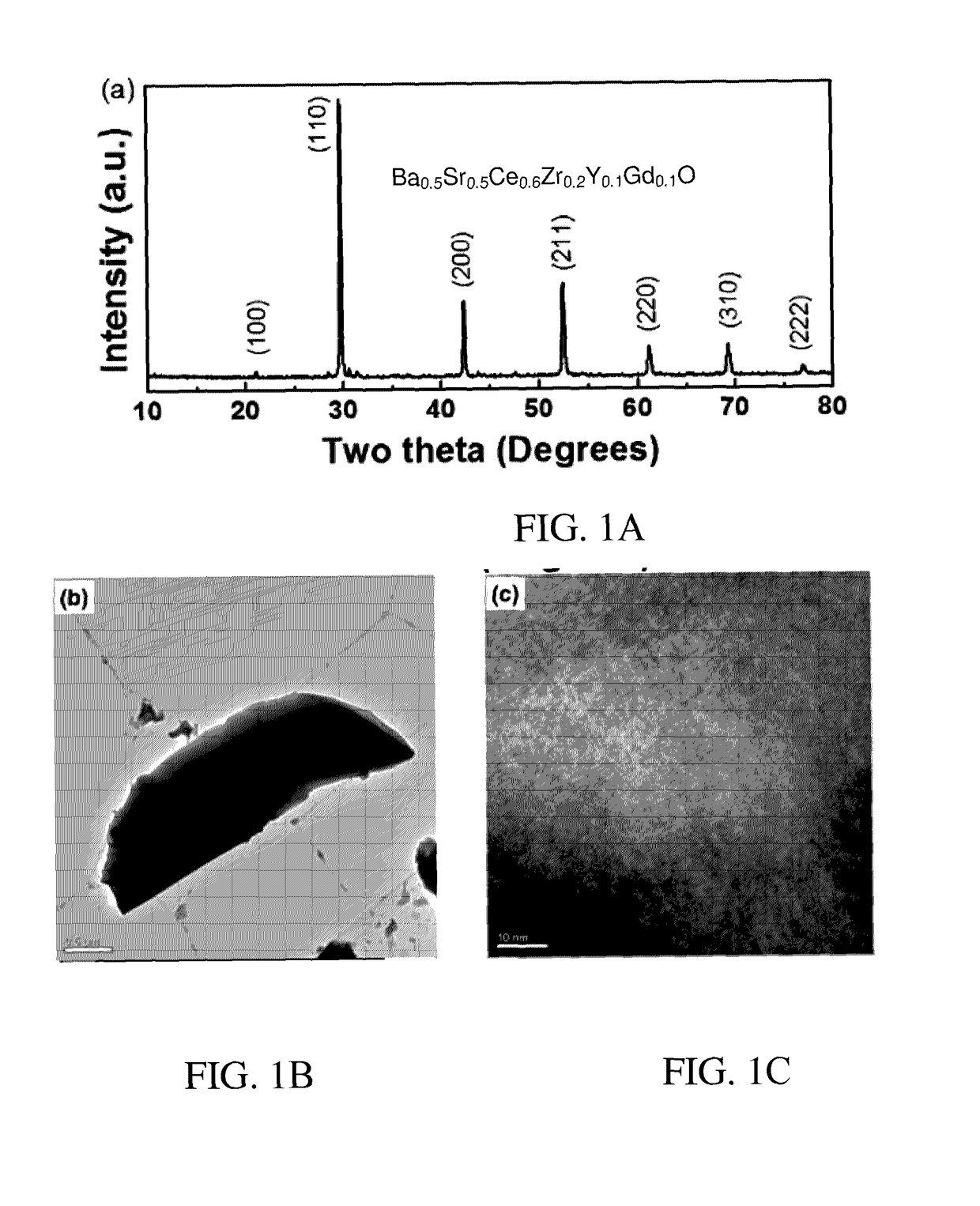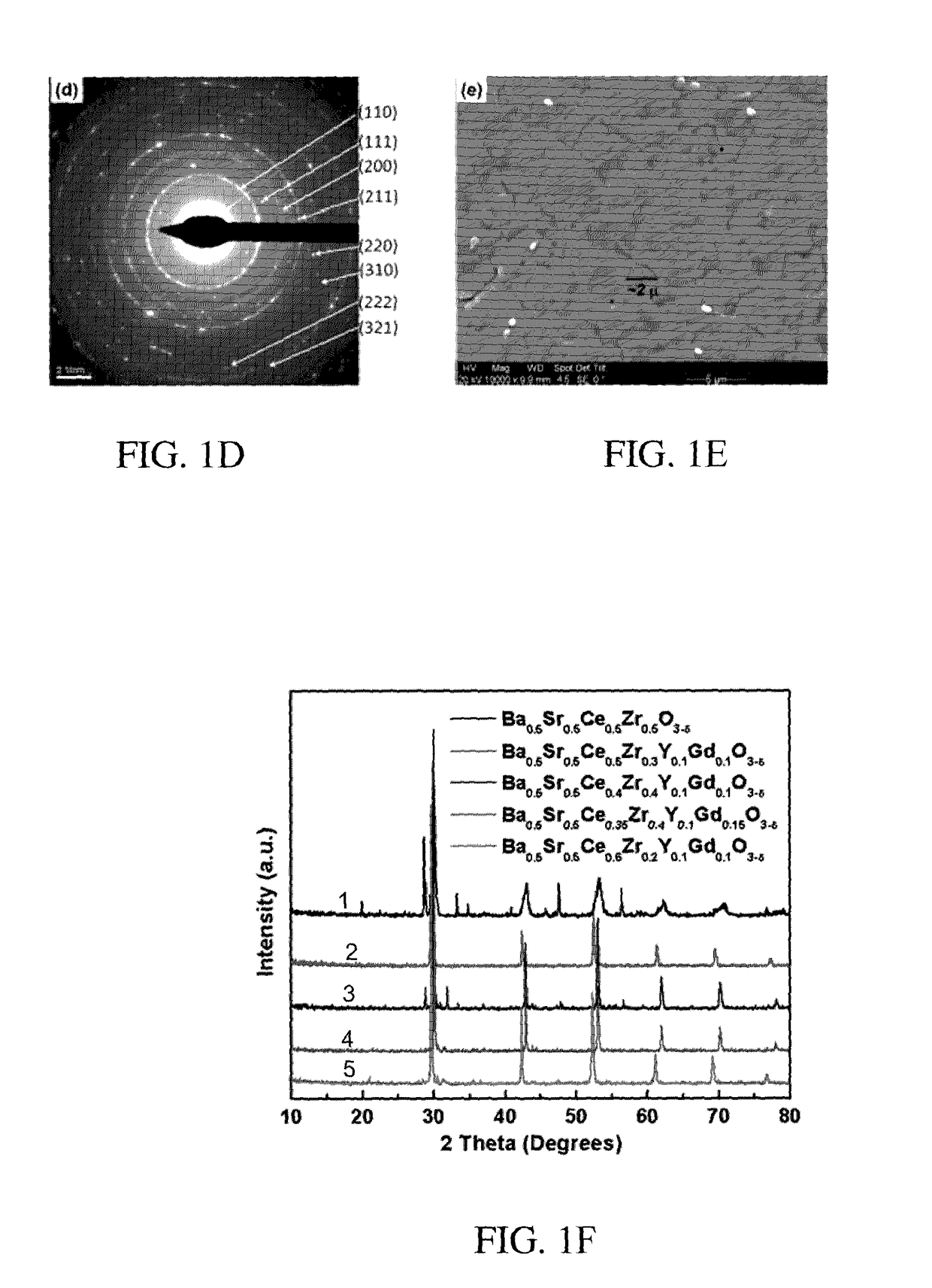Chemically Stable Proton Conducting Doped BaCeO3
a proton conducting and chemical stability technology, applied in the field of chemical stability of proton conducting doped baceo3, can solve the problems of poor sintering ability, material degradation, unsuitability for electrode support, etc., and achieve the effect of excellent chemical stability and sufficiently high proton conductivity
- Summary
- Abstract
- Description
- Claims
- Application Information
AI Technical Summary
Benefits of technology
Problems solved by technology
Method used
Image
Examples
example 1
Preparation
[0118]A. Preparation of Ba0.5Sr0.5Ce0.6Zr0.2Gd0.1Y0.1O3−δ (Perovskite I).
[0119]High purity (>99.9%) oxide and carbonate precursors, barium carbonate, strontium carbonate, cerium oxide, zirconium oxide, gadolinium oxide and yttrium oxide (BaCO3, SrCO3, CeO2, ZrO2, Y2O3, and Gd2O3 from Sigma Aldrich) were mixed in the appropriate ratio and ball milled (200 rpm) for 6 h using 2-propanol as the solvent. The mixture was than dried and calcined at 1050° C. for 24 h followed by further ball milling for 6 h. The as-prepared powders were uni-axially pressed into pellets using an isotactic press at 200 MPa for 3 minutes (˜1 cm diameter and ˜2 cm length) and sintered with their parent powders for 24 h at 1450° C.
B. The following additional compositions of A and B site co-doped proton conducting perovskites were synthesised using the above solid state synthesis method.
[0120]Ba0.5Sr0.5Ce0.5Zr0.5O3−δ (BSCZGY1)
[0121]Ba0.5Sr0.5Ce0.5Zr0.3Y0.1Gd0.1O3−δ (BSCZGY2)
[0122]Ba0.5Sr0.5Ce0.4Zr0.4Y0...
example 2
Stability Measurements
[0128]Stability under water vapor at 90° C. was performed by suspending as-prepared powders above water in a round bottom flask fitted with a condenser for various time durations. Stability under CO2 gas was measured by placing as-prepared powder inside a quartz tube and flowing pure CO2 at a flow rate of 10 SCCM for 24 h or 168 h at 800° C.
[0129]Results of stability testing of Perovskite I are found in FIG. 2A. FIGS. 2C and 2D show the PXRD pattern of BSCZGY 2-5 exposed to water vapor for 24 h and 168 h at 90° C., respectively. It can be seen that for each composition tested, there are no additional peaks after exposure to water vapor atmosphere for 24 h. In case of water vapor exposure at 90° C. for 168 h, compositions, except BSCZGY4, showed good stability against water vapor. FIG. 2E shows the PXRD pattern of as-prepared powders exposed to pure CO2 at the rate of 10 SCCM at 800° C. for 24 h. PXRD patterns confirms the absence of additional peaks due to BaCO...
example 3
ity Measurements
[0132]Sintered pellets were cut into smaller disks and both sides were ground and polished to obtain the desired thickness with flat and parallel surface to one another. Pt paste was brushed on both side as electrodes and fired at 800° C. for 2 h.
[0133]Conductivity was measured using an AC impedance analyzer (Solartron electrochemical impedance spectroscopy; SI 1260) at various temperatures and under various environments. Prior to measurement, samples were held at the temperature of measurement for a minimum of 2 h and a maximum of overnight.
[0134]In order to be used as an electrolyte in fuel cell applications, along with excellent chemical stability, high conductivity is also beneficial. FIG. 3B illustrates conductivity measurements for Perovskite I under various listed conditions. FIG. 3C compares conductivity of certain perovskite composition, showing that Perovskite I (BSCZGY5) showed the highest conductivity (˜10−2 Scm−1) at 600° C. in wet H2 among all the compo...
PUM
| Property | Measurement | Unit |
|---|---|---|
| volume ratio | aaaaa | aaaaa |
| temperature | aaaaa | aaaaa |
| temperature | aaaaa | aaaaa |
Abstract
Description
Claims
Application Information
 Login to View More
Login to View More - R&D
- Intellectual Property
- Life Sciences
- Materials
- Tech Scout
- Unparalleled Data Quality
- Higher Quality Content
- 60% Fewer Hallucinations
Browse by: Latest US Patents, China's latest patents, Technical Efficacy Thesaurus, Application Domain, Technology Topic, Popular Technical Reports.
© 2025 PatSnap. All rights reserved.Legal|Privacy policy|Modern Slavery Act Transparency Statement|Sitemap|About US| Contact US: help@patsnap.com



